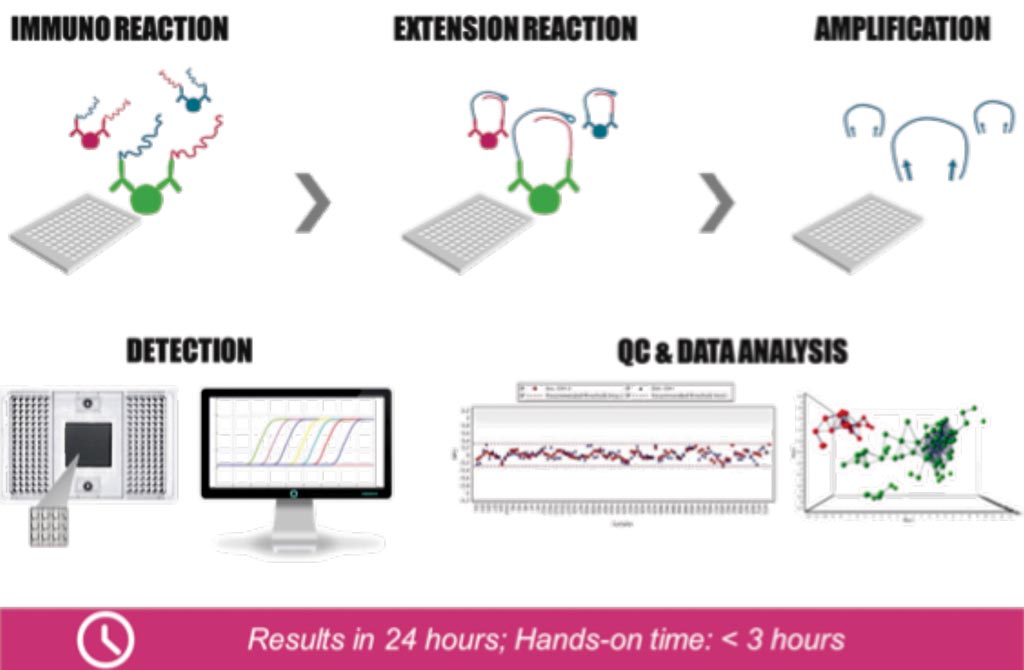Inflammation Biomarkers Identified as Risk of Polyneuropathy
By LabMedica International staff writers
Posted on 05 Sep 2018
Polyneuropathy is one of the most common complications in people with diabetes. First symptoms are often pins-and-needles sensations in the feet. Although polyneuropathy is present in about 30% of people with diabetes, it often remains undiagnosed.Posted on 05 Sep 2018
Although many patients suffer from polyneuropathy, relatively little is currently known about its development, which also limits the therapeutic options. It is known that inflammatory processes contribute to other diabetic complications such as heart attack or stroke.

Image: A diagram of proximity extension assay technology (Photo courtesy of Olink).
A team of scientists led by the German Center for Diabetes Research (Neuherberg, Germany) assessed the associations between biomarkers reflecting multiple aspects of immune activation and distal sensorimotor polyneuropathy (DSPN). The study was based on 127 cases with incident DSPN and 386 non-cases from the population-based Cooperative Health Research in the Region of Augsburg (KORA) F4/FF4 cohort (follow-up 6.5 years).
Serum levels of biomarkers of inflammation were measured using proximity extension assay technology. Twenty-six out of 71 biomarkers were associated with incident DSPN. After adjustment for multiple testing, higher levels of six biomarkers remained related to incident DSPN. Three of these proteins (MCP-3/CCL7, MIG/CXCL9, IP-10/CXCL10) were chemokines, while the other three (DNER, CD40, TNFRSF9) were soluble forms of transmembrane receptors.
The chemokines showed neurotoxic effects in a cell culture model, which indicates their involvement in the development of neuropathy. When the data for these six biomarkers were added to a clinical risk model, the predictive quality of the model improved significantly. Further pathway analyses indicated that different cell types of innate and adaptive immunity are likely to be involved in the development of DSPN. Overall, the study has therefore been able to reveal novel associations between biomarkers of inflammation and the risk of polyneuropathy and to provide evidence suggesting a complex interaction of innate and adaptive immunity in the development of this complication.
The authors concluded that the study significantly improves understanding of the role of inflammatory processes in the development of distal sensory polyneuropathy in the elderly both with and without type 2 diabetes. The main findings must now be replicated in other cohorts. In addition to biochemical investigations, investigations of immune cells are also important. The long-term aim of this work is to clarify whether and how modulation of inflammatory processes can supplement the options for prevention and therapy of distal sensory polyneuropathy.
Christian Herder, MD, a professor, and lead author of the study, said, “In our study, we identified novel biomarkers that indicate the risk of polyneuropathy. For the first time, we were also able to find indications that in addition to the innate immune system, the adaptive immune system could be involved in the development of the disease.” The study was published in the September 2018 issue of the journal Diabetes.
Related Links:
German Center for Diabetes Research













